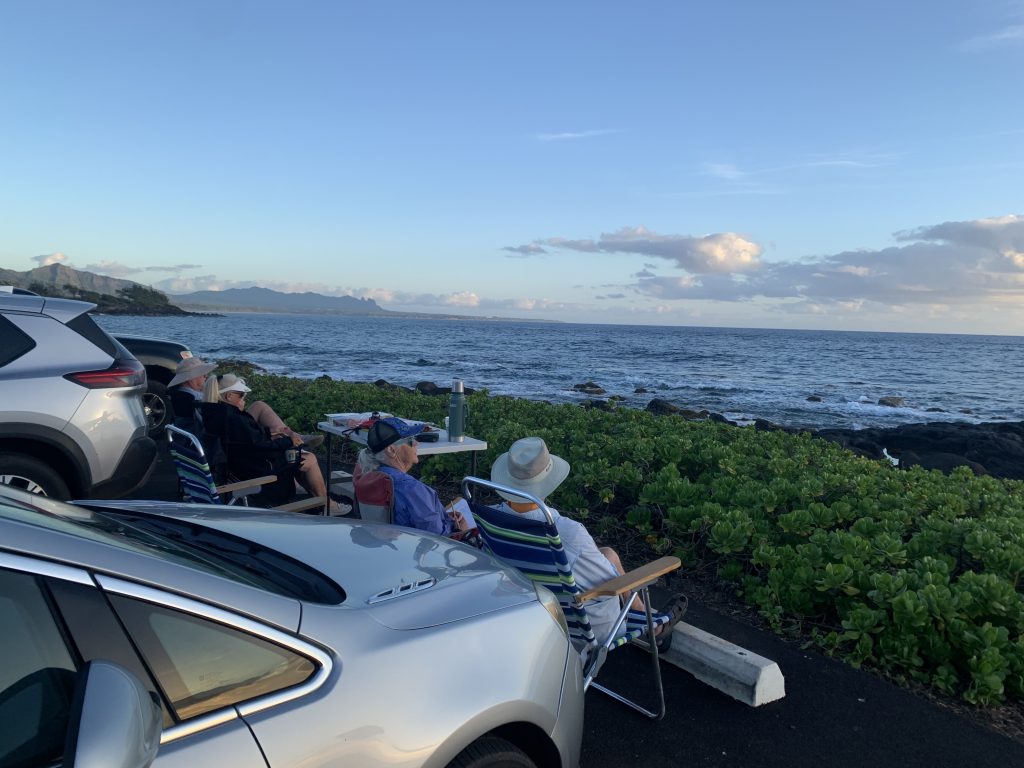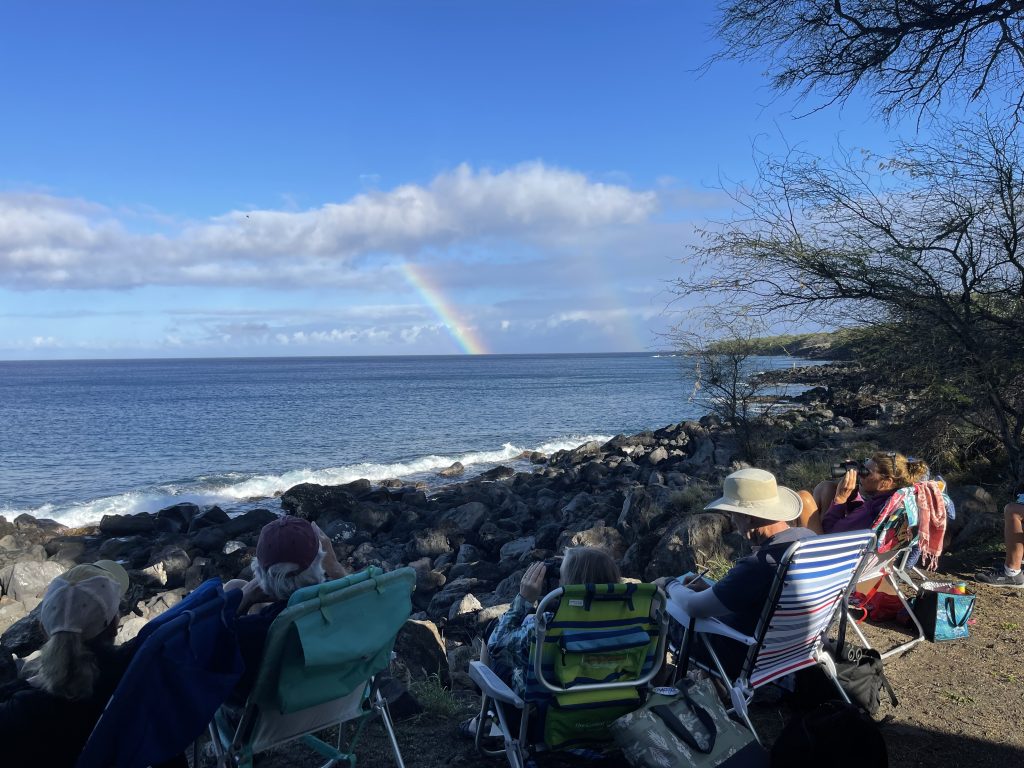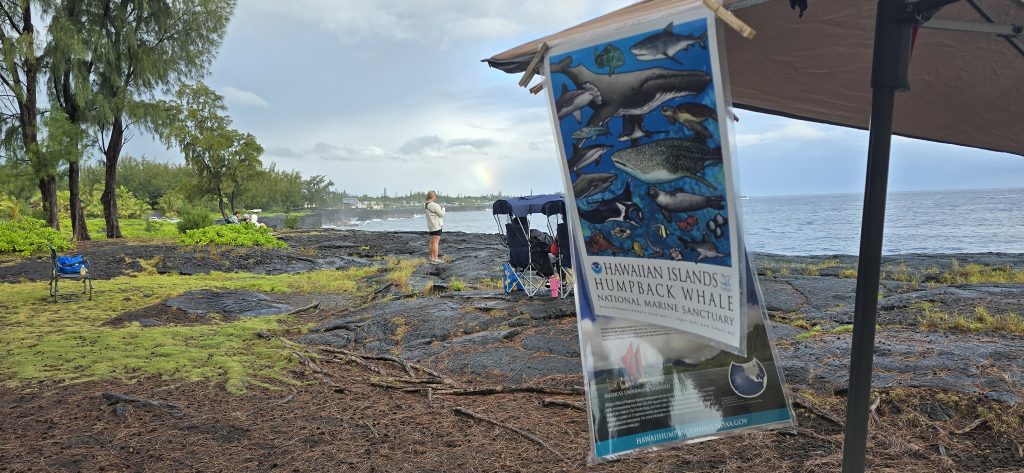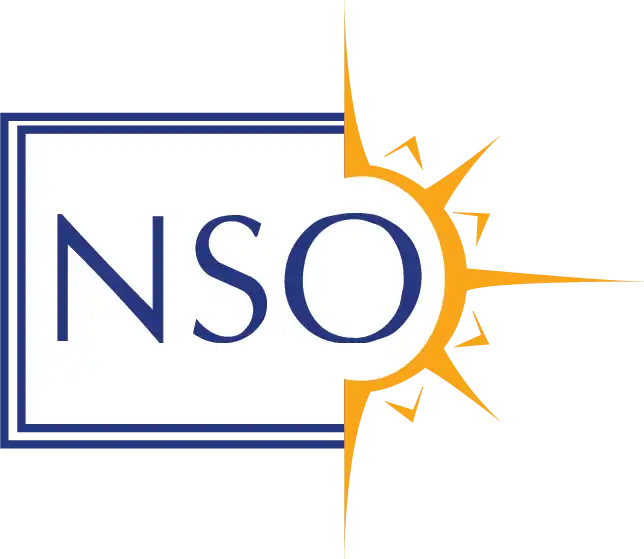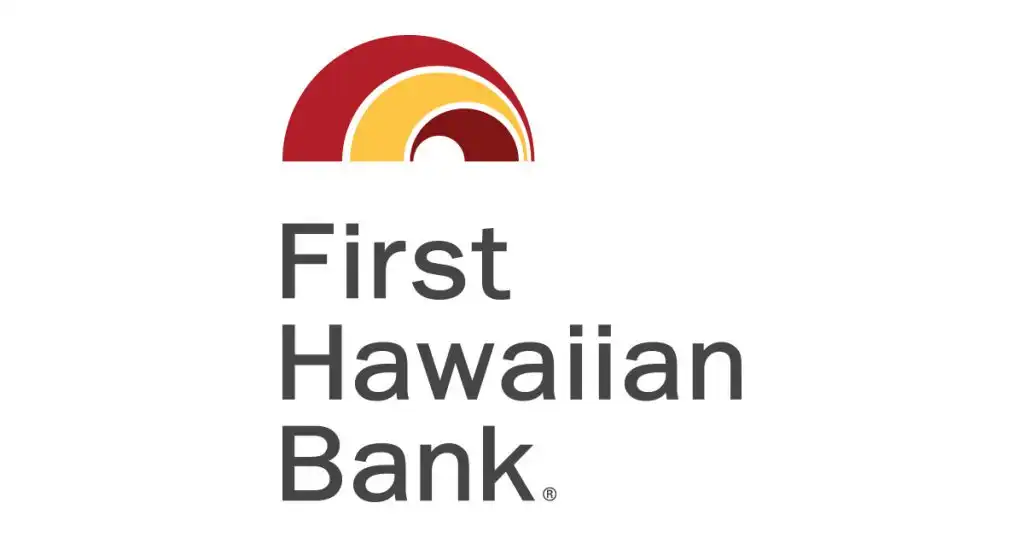2,121 humpback whales spotted during first coordinated count of 2025 koholā season

Sanctuary Ocean Count and Great Whale Count volunteers observe koholā, humpback whales from Kaua‘i, O‘ahu, Molokaʻi, Hawai‘i and Maui.
A total of 429 volunteers gathered data from the shores of Kaua‘i, O‘ahu, Molokaʻi and Hawai‘i islands during the Hawaiian Islands Humpback Whale National Marine Sanctuary Ocean Count and from Maui during the Great Whale Count by Pacific Whale Foundation, the first of three coordinated whale counts between the two organizations in 2025.
This is the seventh year that both counts are coordinated on the same days, ensuring the data from all the main Hawaiian Islands are collected simultaneously.
Volunteers collected data from 41 sites across all the main Hawaiian Islands on Jan. 25. A total of 296 whales were observed during the 10-10:15 a.m. time period, the most of any time period throughout the day’s count.
On the islands of Kaua‘i, O‘ahu, Molokaʻi and Hawai‘i, Ocean Count volunteers collected data from 30 sites; a total of 183 whales were observed during the 10-10:15 a.m. time period, the most of any time period throughout the day’s count.
On Maui and Lānaʻi, Great Whale Count volunteers collected data from 11 sites during 15 minute intervals between 8:30 a.m. and 11:50 a.m. A total of 113 whales were observed during the 10-10:15 a.m. time period, the most of any time period throughout the day’s count.
On Kaua‘i, the total number of whales observed during the day’s count was 440, on O‘ahu, the total was 399, on Molokaʻi, the total was 87 and Hawai‘i 493. The total number for the Great Whale Count on Maui was 702, for a grand total of 2,121 throughout the state. This number may represent duplicate sightings of the same whale by different observers or at different time periods or different locations throughout the day.
Data collected during the Sanctuary Ocean Count and Great Whale Count combined with other research efforts can help reveal trends in humpback whale occurrence within and amongst whale seasons.
Across the main Hawaiian Islands, weather conditions were ideal for observing whales during the first half of the count with mostly sunny skies and calm seas. For the remainder of the count, the majority of sites experienced an increased presence of wind, ocean swells and white caps which made it less ideal conditions for observing whales.
A variety of other species were also spotted during the count including honu (green sea turtles), māno (shark), naiʻa (spinner and bottlenose dolphins), mālolo (Hawaiian flying fish) and multiple bird species such as koaʻe kea (White-tailed Tropicbird), ʻio (Hawaiian hawk), ʻiwa (great frigatebird), mōlī (Laysan albatross), noio kōhā (brown noddy), Nēnē (Hawaiian goose), and more.
Ocean Count promotes public awareness about humpback whales, Hawaiian Islands Humpback Whale National Marine Sanctuary, and shore-based whale watching opportunities. Site leaders tally humpback whale sightings and document the animals’ surface behavior during the survey, which provides a snapshot of humpback whales’ activity from the shorelines of Kaua‘i, Oʻahu, Molokaʻi and Hawai‘i islands. Ocean Count is supported by the National Marine Sanctuary Foundation.
The Great Whale Count by Pacific Whale Foundation had site leaders count whales from shore as part of a long-term survey of humpback whales in Hawai’i, with 12 survey sites along the shoreline of Maui and a site on the shoreline of Lānaʻi. This event provides a snapshot of trends in relative abundance of whales and is one of the world’s longest-running community science projects.
Both counts take place three times during peak whale season annually on the last Saturday in January, February and March.
- Preliminary data detailing Sanctuary Ocean Count whale sightings by site location are available at: https://oceancount.org/resources/. Additional information is available on the sanctuary’s website at http://hawaiihumpbackwhale.noaa.gov.
- Pacific Whale Foundation’s Great Whale Count data may be found at https://www.pacificwhale.org/research/community-science/ with additional information at www.mauiwhalefestival.org





